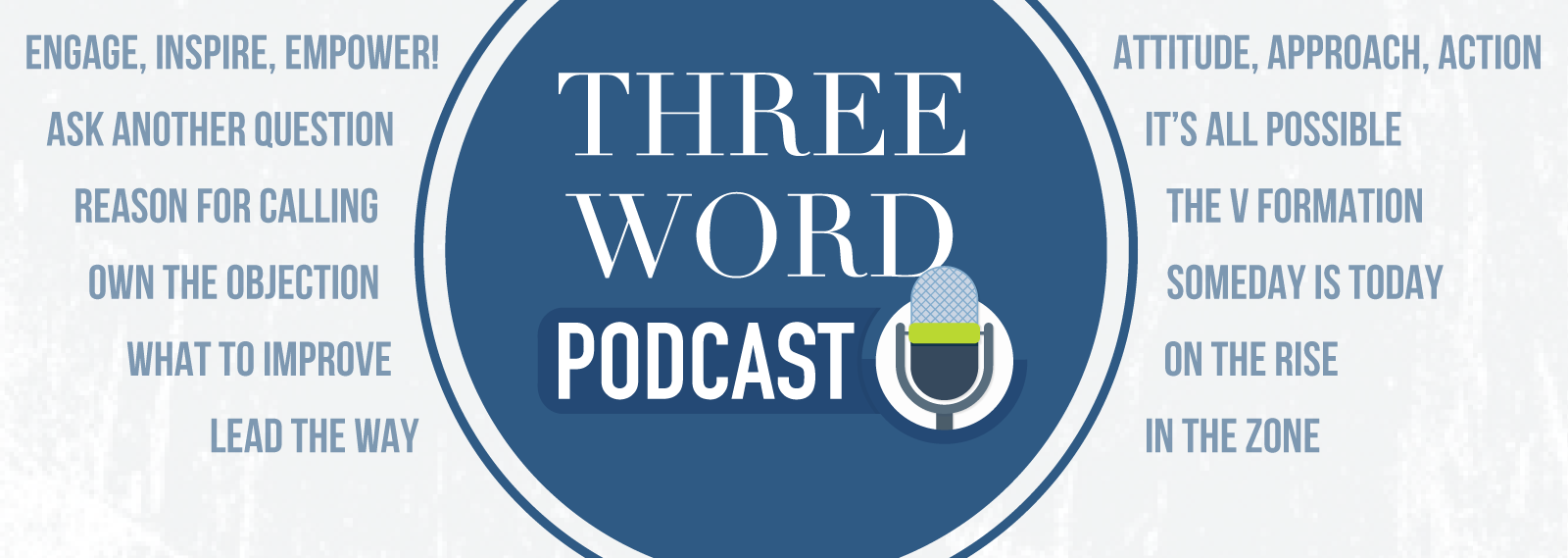Episodes

Tuesday May 25, 2021
Episode 104, Turn a No into a Yes!
Tuesday May 25, 2021
Tuesday May 25, 2021
Lisa Thal is an Author, Speaker, and Business Coach. Simplify Your Sales meetings. She wrote the book "Three Word Meetings." Lisa coaches leaders on simplifying sales and business meetings with fun and interesting 3-word topics to get your sales team motivated and inspired. She has over 34 years of marketing, sales, and leadership experience.
Episode 104, Learn the technique to turning a No into a Yes!
Well, It's human behavior for us to avoid any negative experiences. I think you will agree that no one wants to be a Negative Nelli or face negative experiences if they can avoid them. If you're in sales, you experience the word "No." You can call them objections or rejections, but let's call it what it is, a prospect is avoiding us and perhaps not interested in your product or service.
So the question is, how can you tell they want to say no?
In sales, you want to get the "no" as soon as possible so you can move on. Otherwise, your prospect will steal time from you and drag you along for weeks or months without giving a definitive answer.
I call this "Noping," and it usually sounds like:
- "Hey, can you call me back?"
- "Send me an email, and I'll get back to you."
- "Hey, follow up with me next week."
- "Sorry I had to cancel; I'll get back to you with a better time."
When I hear "Nope" phrases, I know I'm in trouble. So we keep calling even though they're probably not interested. This situation typically happens when you're setting the next steps after your presentation. Instead of saying "We're not interested right now," which would be ideal, you'll hear, "We'll think about it and get back to you," "Let's follow up in two weeks," or the dreaded "Let me think about what we discussed today.
It may be time to consider implementing the Negative Reserve Selling.
David H. Sandler created negative reverse selling in 1967 as part of the Sandler Selling System. The system aims to convince the prospect that they are pursuing the deal and need the product rather than 'selling' them. Brilliant, right?
It is a reverse psychology technique meaning that it takes the opposite approach to what you would expect.
As a salesperson, you will be asking questions and making statements that would seem to discourage your customer from buying your products while, in reality doing the opposite.
So, how is the negative reverse selling actually happen? There are two main parts of the process:
- It starts with a Softening Statement- "Feeling" these phrases and sentences will help you become much better at negative reverse selling than you would have if you only focused on techniques.
- The softening Statement clarifies the customer's concern and ensures that they are heard and understood. The softening Statement is to disarm your potential customer while also making sure that the negative Statement doesn't anger or provoke them. Some examples of the softening Statement include "I understand what you mean," "You're absolutely right," and "That is a valid concern," " Tell me More."
- Next is the Negative Statement
- The negative Statement is the opposite of the Statement you would usually make or the opposite of the position you want to take. The negative Statement leans into the concern of your potential client and makes them start defending the product instead of objecting to it.
The negative reverse selling technique is about making your customer sell your products to themselves. Most of the time, people tend to argue, so you just need to take the correct position to guide their argument in the direction you need. Negative reverse selling helps you be in control of the conversation, and that's what we want!
Reverse Selling is a strategy of responding to your prospect's question with another question. A seller will do this three times to understand the prospect's motivations or needs better. For example, if the client asks, 'Could you lower your price?' you would respond with, 'What price did you have in mind?'
See, you want to discover the real objection or your prospect's lack of interest and get them to admit the answer is "No" without getting too negative—your finding what is keeping you from working together. Essentially, you're getting the prospect or client to realize they're wasting your time if they do not have the resources or genuine interest in you helping them.
Here's an example:
Prospect: "I need more time to think about it."
Salesperson: "Typically, when I hear someone say," I need more time to think about it," it means I have fallen short in sharing the value of my program for you, and I apologize.
Is it fair for me to assume that's the case?"
That's it. The key phrase and framework will save you countless hours. "Is it fair for me to assume that's the case?" gently pushes prospects into giving you a more honest answer about their interest in your product.
A Negative Reverse is a question preceded by a softening statement such as "Hmm" or "I see," or "Good point." The question is in the negative or expressed in a manner opposite to the position you want to establish or the direction you want to steer the conversation.
So I am encouraging you always to be positive, but know in certain situations you may need to be a Negative -Nellie.
If you think someone could benefit from this episode, share it, rate it, or subscribe for Free at Itunes or Spotify, so you don't miss out on the next three-word podcast.
Learn more about how to Simply Your sales meetings using 3-word topics at http://www.threewordmeetings.com .


No comments yet. Be the first to say something!